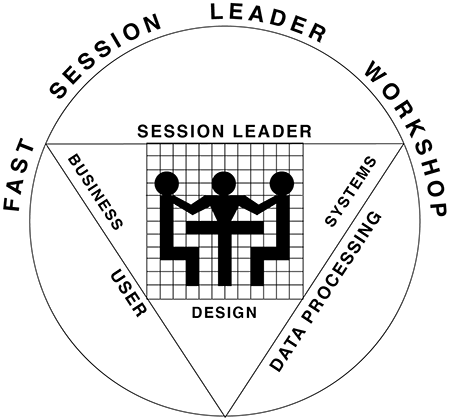July 1998

"Swift" Strategic Planning, Part 1 | Gary rush, IAF CPF
Strategic planning is often relegated for use at the corporate level only or dropped all together. That is because people think that it requires a lot of time and effort. Good strategic planning can and should be used for corporations, departments, divisions, units, projects, teams, and even individuals. It is simply a process of determining where you want to go and how you will get there. "Strategic" generally means that it is longer term, i.e., over the next 10 to 50 years or more rather than over the next 5 to 10 months. Corporations often spend months or years developing detailed strategic plans. Effective, workable plans can be developed in a matter of days or weeks - or even hours in some cases.
First of all, let me establish some basic principles that I follow for a plan. An effective strategic plan should:
- Be simple, easily communicated, and understandable by those who develop and follow it.
- Be alive -- never static or "cast in stone".
- Look out as far as possible -- 10 years or more is appropriate.
- Constantly evolve without lacking direction. Avoid "getting it perfect".
Some plans, particularly for corporations or major company divisions, require developing detailed information on the current company, industry trends, and competition (called SWOT - Strengths, Weaknesses, Opportunities, Threats). Done properly, this research is ongoing and feeds the strategic planning process. I'll explore the planning process rather than the research process.
"Swift Strategic Planning" means focusing a group of people to develop a strategic plan without taking weeks or months of effort. By building the plan using short, facilitated sessions that "peel away the layers" of the plan, we build highly effective plans without losing group energy. Here's how:
Effective strategic planning depends on the involvement of the people. It can not be done in a vacuum effectively. Therefore, workshops are the ideal way to develop strategic plans. One problem with the workshops, though, is that they often take 2 to 3 days or more. Pulling the decision-makers away from business for 2 to 3 days is difficult and seldom done. Instead, a workshop of 1 day or less is a more effective alternative. I am not a fan of short workshops because of the loss of group evolution, however, planning groups seem to either evolve faster or they are highly dysfunctional and don't evolve even in the 2 to 3 days. Dysfunctional groups take longer, no matter what you do. I have seen effective plans developed with potentially dysfunctional groups in 4 to 8 hours! A complete plan is not developed in the short workshop, however, a skeleton plan is developed and completed throughout a series of short workshops. Here's how we do that:
Preparation
Preparation is essential to make this process work. The facilitator must interview all of the participants to:
- Identify participants and any potential problems with the group or their expectations.
- Clearly identify the deliverables and understand the group's perception of the deliverables.
- Set the group's expectations of what is going to be accomplished and establish the plan (e.g., number of short workshops) and time-frame for the overall process.
- Develop the detailed agendas for the workshops.
Typical preparation requires 2 to 3 days of effort on the part of the facilitator. It should be conducted 1 to 2 weeks prior to the first workshop.
The Workshop
Develop the plan in workshops. Conduct workshops for 4 to 8 hours every two weeks. It takes from 3 to 8 workshops to complete the plan to a point where it is "done". The workshop process then continues at a more extended pace (e.g., every 3 to 6 months) to continue updating the plan. The agenda for the workshops vary depending on how much you accomplish or which "hot" issues arise between sessions. We normally look to complete one step and parts of the other steps in the first workshop. Subsequent workshops complete the steps. Keep the steps 60 minutes or less. Define how they relate to each other, clearly, in the introduction. The basic agenda components are (excluding introduction and wrap-up):
Vision - This is a step to capture where they are headed. Drawing pictures is the fastest way to do this.
Mission - This captures a statement of why they exist, what they do, and who they do it for. From the prior pictures, have the group craft a statement. Keep this short.
For the next steps, capture a list of candidate ideas, then detail one or two to set the framework. Remaining ideas are completed in subsequent workshops.
Values - Important principles "Customer is always right" the group believes.
Objectives - What they want to accomplish. Objectives are Specific, Measurable, Attainable, Relevant, and Time-based (SMART).
Strategies - How they plan to reach their objectives.
Summary
In my next newsletter, I will describe, in more detail, how to conduct each step, along with some additional steps you may need. In the mean time, remember, Keep it Simple (KIS). ![]()


